









 Illustration by Emily Wolfe @wemolt
Illustration by Emily Wolfe @wemolt
We’ve developed an algorithm for the most cost effective and efficient ways to achieve safe air quality in the office. Here’s why your organisation’s leadership should care.
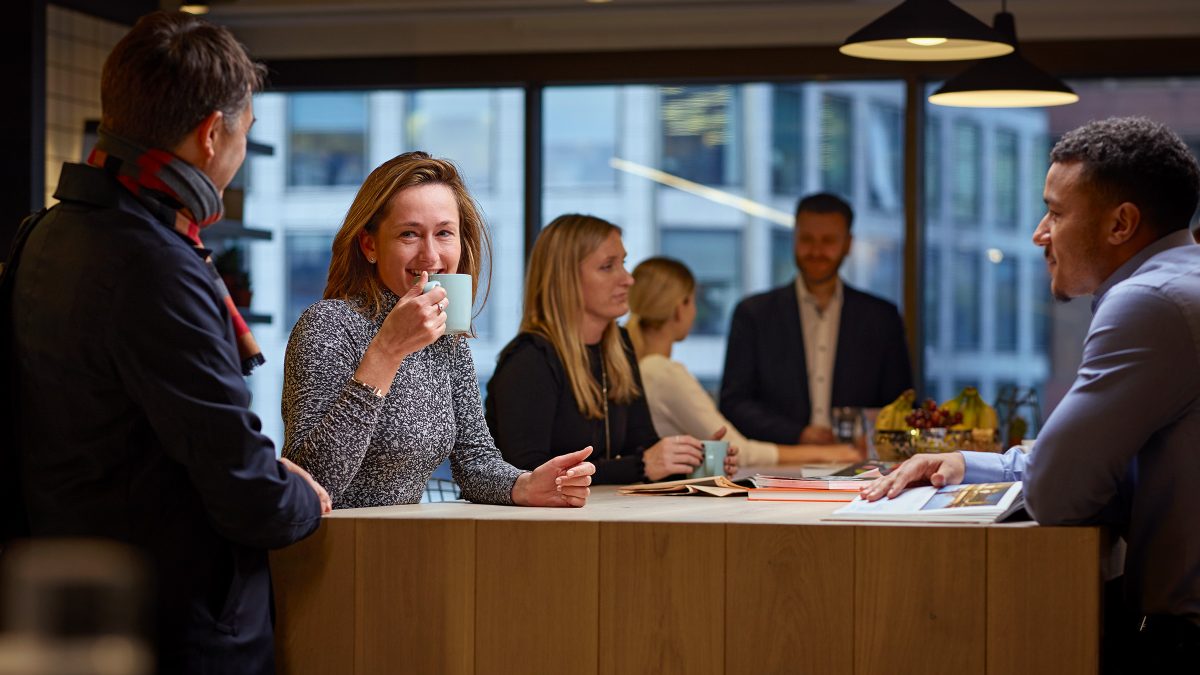
The following is an excerpt from our recently published whitepaper.
The normalisation of remote work has shifted the need to be in the office from a requirement to a conscious choice. Yet, even with this remarkable change, the vast majority of companies and employees believe that the corporate workplace will remain highly relevant in the future.
Surveys show 87% of employees identifying the office as critical for collaboration and building relationships – their top-rated needs for the office. The workplace enables human interaction, innovation and knowledge sharing in a way that is difficult to achieve when people are remote, even with sophisticated virtual collaboration tools. Most research shows that effective interactions are related to two critical attributes:
Today’s challenge is to bring people together safely, under pandemic constraints. In the future, providing a high level of air quality will be expected or required as a part of ongoing health and wellness initiatives.
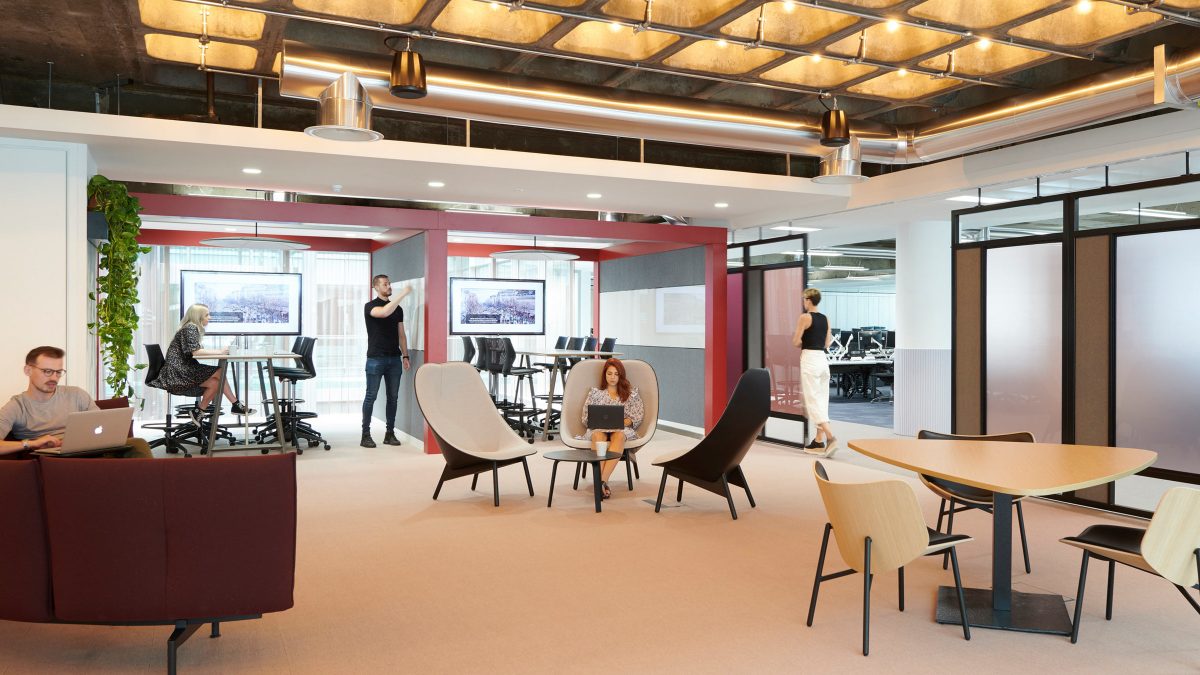
Team productivity, innovation and cultural cohesion are linked to being together in one place. Organisations need to know what density of occupation complies with safety criteria.
While employers are furiously adapting offices to comply with government advice, we’re working with our clients on two key questions:
A future workplace study conducted by Harvard Business Review in 2019 demonstrated the importance of indoor environmental quality (IEQ) prior to the pandemic, with the top six design amenities requested by employees related to IEQ.
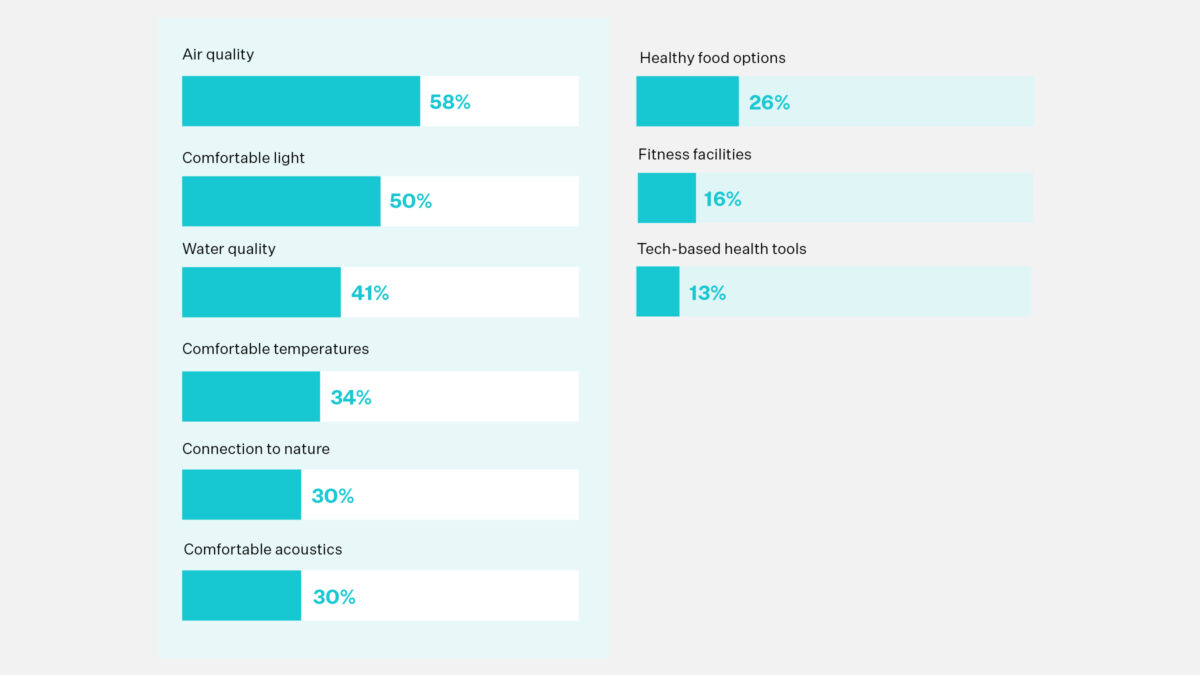
Social and operational measures such as hygiene and distancing only address the threat of infection through droplets, which are relatively heavy particles emitted when people cough, sneeze, laugh or speak loudly. These basic precautions ignore the exposure to microscopic airborne pathogens that are suspended in the air like smoke particles and travel much greater distances.
These aerosols pose a risk to anyone who inhales them. They present a more pervasive threat than droplets. The significance of aerosols is increasingly recognised by epidemiologists and is the focus of our recently developed proprietary models and tools. With occupants’ expectation for improved air quality, a comprehensive IEQ program is expected to be a key design requirement for the foreseeable future.
Key to bringing us back together safely is the air quality in the workplace, which directly protects staff, clients and customers.
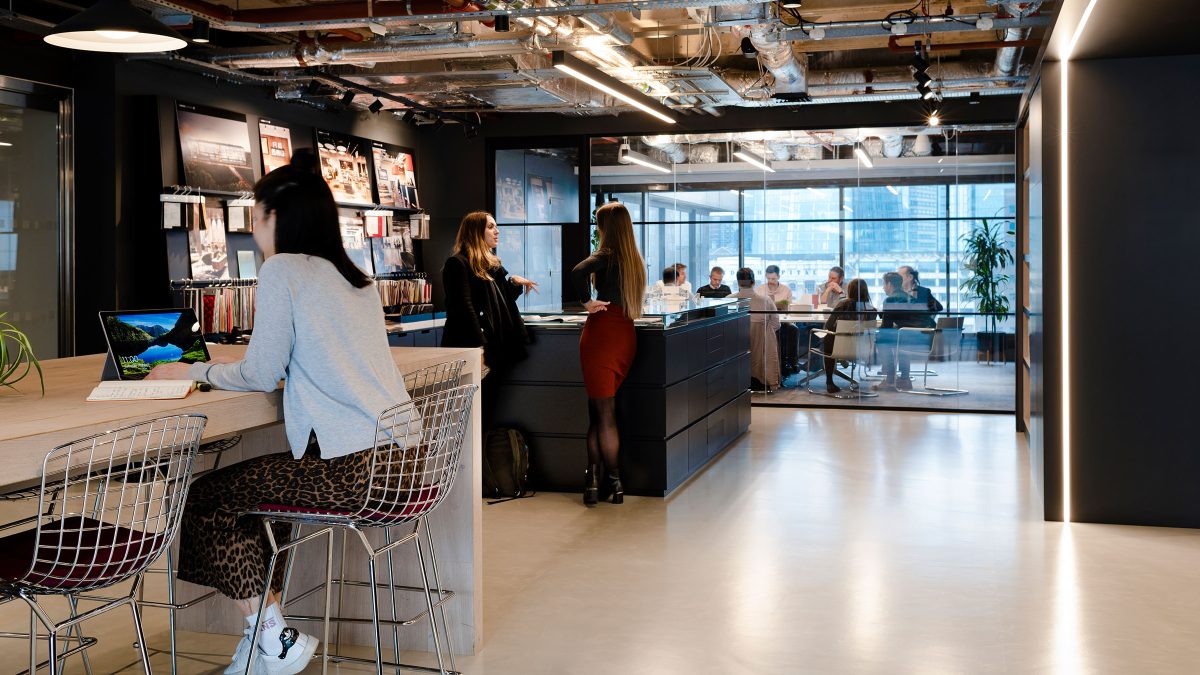
Our algorithm is derived from tested scientific models, current research, and our team’s deep workplace and engineering knowledge. It allows us to study the combined effect of operational, programmatical and engineering measures to create a protective environment.
For each client, project and space program, a unique curve relating the air quality score to safety is generated. This allows our team to compare the cumulative effect of measures taken together. As a result, we are better able to maximise the quality of the environment while optimising the design to address budget, schedule and cultural considerations.
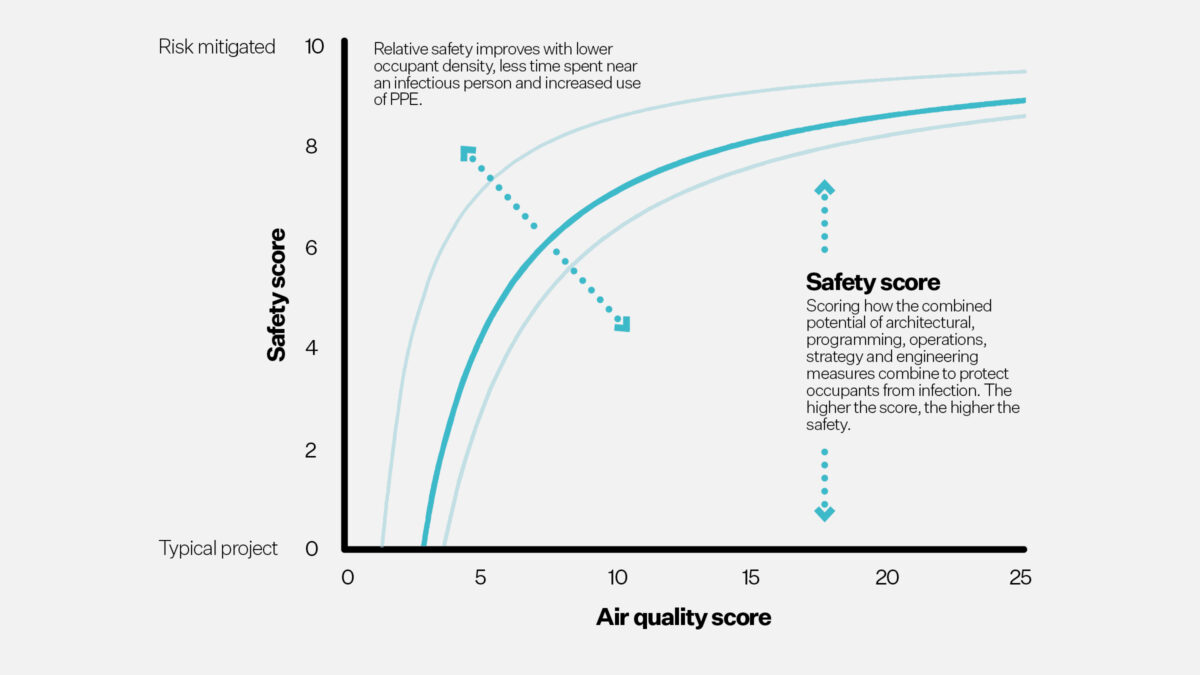
Our teams study how different measures affect the number of occupants who can come together safely, to support business growth. Air quality score is related to occupant density, which can increase as the air quality is increased. The higher the air quality score, the closer a space can get to its original occupancy from the perspective of aerosol transmission.
This, in combination with our distancing studies and operational recommendations to address droplet, direct, and fomite transmission, determines the overall occupant density profile for a set of client-driven parameters. Employers today have significant decisions to make about how to reoccupy offices. Deciding on the number of measures to incorporate into the workplace in response to this is not a straightforward exercise and is highly dependent on culture, geographical location and the client’s overarching workplace strategy.
Complicating matters is that the effect of measures doesn’t simply sum, with many combinations reducing the effectiveness of others when used together. Our holistic approach helps navigate this complex area.
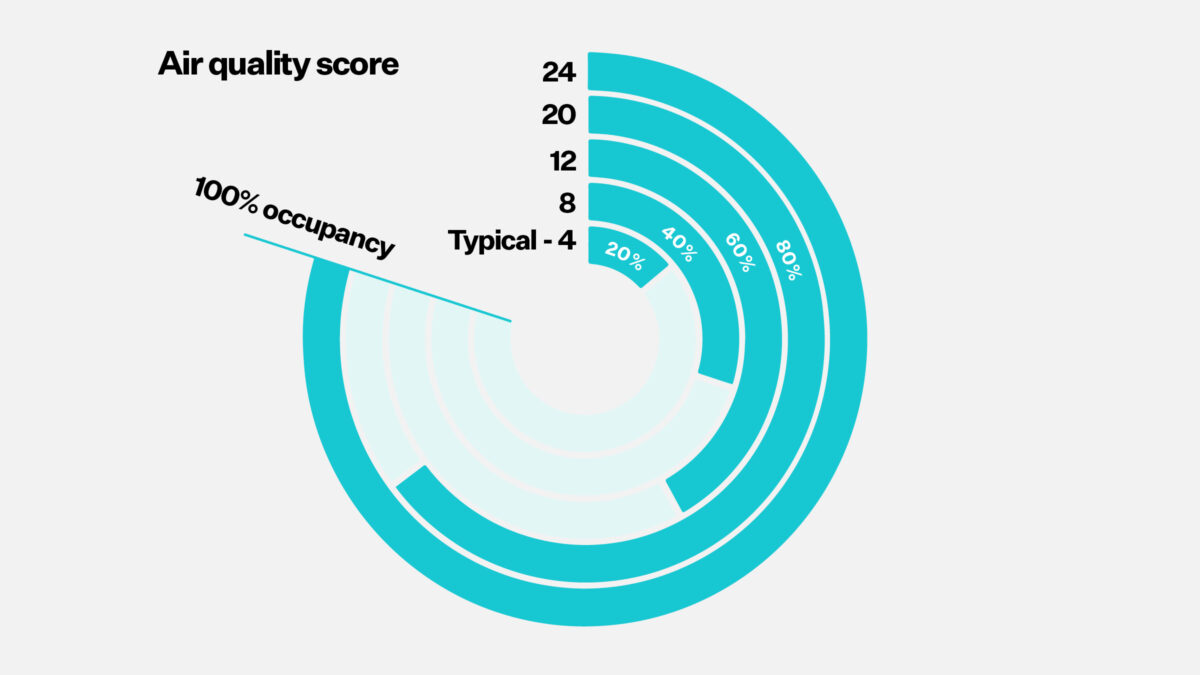
The effects of 2020 on the construction market are hard to overstate. Real estate portfolios are being reconsidered and the where, when and how’s of welcoming employees back into the workplace are just now starting to come into focus.
Finding ways to return to a safe and healthy workplace is key to enabling innovation and business growth but will only be possible through data and validated models used to inform real estate decisions. Ultimately, the combination of reconnecting in-person, along with well-designed remote working strategies, will enable individuals and teams to perform at their best and set business back on the track to growth.
Global Director